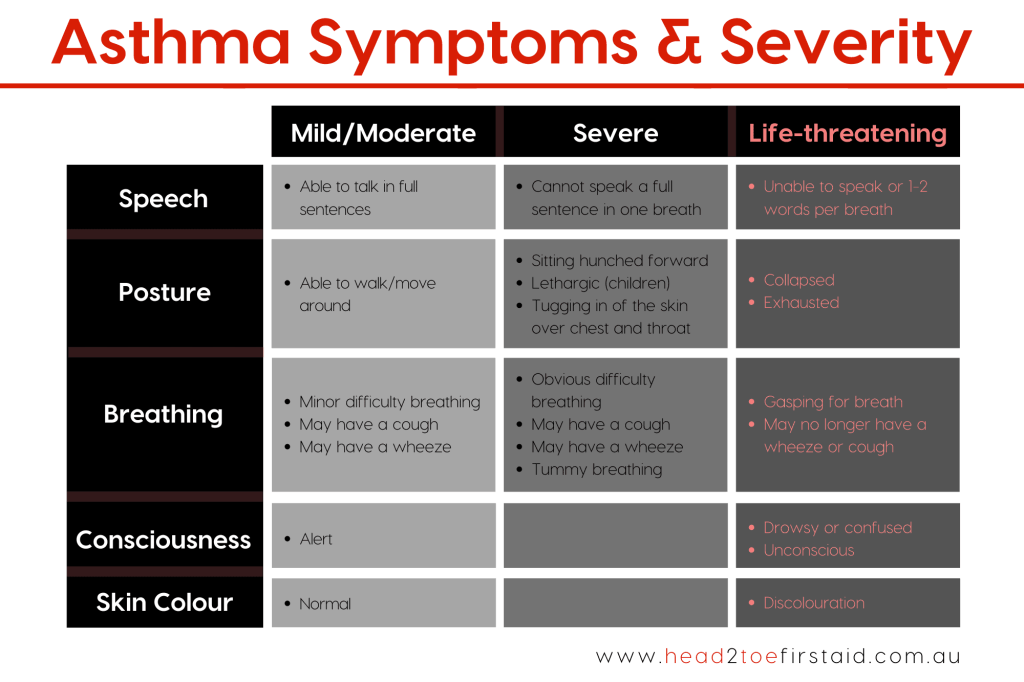
Quick Facts on Asthma in Australia
With 1 in 9 Australians (2.7 million people), affected by asthma, there’s a strong chance that someone within your family or close circle is living with the daily burdens of this condition.
For the head2toe family, my daughter Aimee is our asthma kid, and when her triggers include laughing – you can imagine that prevention & management is absolutely vital for us!
Continuing to look at the statistics, a sad figure that might surprise you is that more than 1 person per day dies of Asthma in Australia. Also, when it’s estimated that 80% of hospitalisations are preventable and only 28.4% have an Asthma Action Plan, you can see why there’s strong need for ongoing awareness, education and proper management.
So what is Asthma?
It’s a long-term medical condition of the airways to the lungs, and as a result, those who suffer from asthma have sensitive airways that react when exposed to certain triggers.
Their airways (breathing tubes) can become inflamed and swollen, mucous plugs develop and create build up, and the smooth muscle around the airway constricts. All of this narrows the airway, and when that happens, it’s like breathing through a thin straw. Not fun.
This is what we used to refer to as an asthma attack, but is now known as an ‘asthma flare-up’.
Not surprisingly, this can lead to big problems and can become life-threatening. Interestingly though, these ‘asthma flare-ups’ aren’t always immediate – they can happen within minutes, but can come on more slowly over days or even weeks.
Want the good news?!
For the majority of people, asthma can be managed and usually well controlled, without having to resort to the life of a hermit!
In this article, we step you through the most common symptoms, triggers and mistakes people make when managing and treating their asthma.

What are Asthma Symptoms?
When an asthma sufferer is exposed to certain triggers, their airways become affected, which in turn creates these common symptoms:
- Ongoing or persistent cough (regardless of sound it makes)
- Difficulty breathing or breathlessness
- Wheezing / high-pitched whistling
- Chest tightness or pain
Adding to this though, is that for some people, they experience ‘silent’ symptoms. For instance, when their airways tighten, it doesn’t present as the common asthma wheeze or cough.
So then, what we teach in Asthma First Aid, is that symptoms and their severity can present in different ways.
The table shown here below details how the common symptoms can then manifest in terms of:
- Speech
- Posture
- Breathing
- Consciousness
- Skin Colour

What triggers Asthma?
As we’ve mentioned, those with asthma have more sensitive airways. What can set off symptoms for each person is called their ‘triggers’, and they can vary from person to person.
Common types of asthma and their triggers include:
> Allergic Asthma – as the name suggests, this is caused by allergens such as pollen, dust, thunderstorms, foods and mould
> Non-allergic Asthma – this is caused by irritants such as perfumes, aerosol products, cleaning products, viruses and air particles from smoke
> Occupational Asthma – when you have triggers in your workplace, including chemicals, animal proteins, fumes and more.
> Exercise-induced Asthma – this is usually brought on by physical activities, but can also include laughter and sex. For toddlers and younger children, this can also include tantrums!
> Nocturnal Asthma – this type of asthma includes symptoms that become worse at night, with potential causes being sleep cycle, heartburn or dust mites.

What are the most common Asthma mistakes?
While there are a number of common mistakes people can make in preventing and managing their asthma, here we’re going to look at the Top 3.
1. NOT following your Asthma Action Plan
And, by following it – we mean every day! There are people who think they’re ticking along nicely with their asthma & if they haven’t had a flare-up for a while, they’ll perhaps reduce how often they take their preventer. Or, forget entirely.
But your preventer is so crucial! It desensitises your airway, reduces inflammation and takes days or even weeks to work. So it’s needed every day to keep your symptoms away.
Also, if you’re having to use your reliever puffer 2 or more times a week for symptoms, then your Asthma may not be under control and you need to revisit your plan with your Doctor.
2. Trying to avoid ALL triggers
Now, don’t get me wrong – it is incredibly important to know your triggers and manage them well. Understanding your triggers is key because it allows you to avoid your triggers where practical, or prepare you to be proactive with your management where you can’t. A perfect example is using your reliever puffer prior to exercise.
But, as I mentioned earlier, my daughter’s asthma symptoms can be triggered by laughter! Bit hard to avoid that in a child.
When normal aspects of life like exercise, colds, flu, air quality and even thunderstorms for others can trigger asthma, then rather than seeking to avoid these entirely, it’s best to focus on working with your Doctor to bring your asthma under control with the right preventer for you, and then carrying your reliever wherever you go.
3. Not using a SPACER, or using it INCORRECTLY with your reliever puffer
Even the most experienced puffer users MUST use a spacer with a Metered Dose Inhaler (MDI), or the old fashioned puffer, to ensure correct and effective distribution. Without a spacer, only a small proportion of medication reaches lungs, as most stays in the mouth, tongue, throat or stomach.
Using a spacer correctly ensures that a greater proportion of the medication reaches the lungs where it is needed.
So, whatever your age A SPACER IS A MUST with a MDI! Then remember that it’s 1 puff to 4 breaths!
Putting more than 1 puff into a spacer is a very common mistake that I see. As you’ll see in the videos below, 1 puff to 4 breaths through a spacer is an easy technique that everyone of all ages can achieve.
These other Asthma Australia videos are also a must-watch for great examples of how to use other asthma devices correctly.
Is your Asthma First Aid up to date?
First of all – if you have any of the symptoms we listed above & haven’t already been diagnosed with Asthma, please visit your Doctor to investigate this further.
Then, if someone close to you in your family or workplace suffers from asthma, please make sure your Asthma First Aid is up-to-date, because every single moment can be critical in the case of a Severe or Life-threatening flare-up.
Come along to our next Certificate Course or contact Karyn to organise a First Aid course at your venue or ours that specifically includes Asthma First Aid.
This article was written for information and education purposes only and is not intended to be a substitute for professional medical advice, diagnosis, or treatment. Always seek the advice of your physician or other qualified health provider with any questions you may have regarding a medical condition. Never disregard professional medical advice or delay seeking it because of something you have read in this article.
